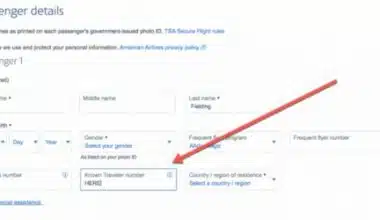Welcome to the fascinating stop in the journey that is the world of layover flights. Understanding what a layover flight entails is essential for a hassle-free travel experience, regardless of whether you are an experienced traveler or a novice to the world of aviation. In this comprehensive guide, we’ll explore the ins and outs of layover flights, their benefits, potential challenges, and expert tips to make the most of your in-between journeys. So buckle up and join us as we set out on this enlightening journey.
What is a Layover Flight?
In the realm of air travel, a layover flight refers to a stop between two legs of a journey where passengers must change planes. It is a brief detour from the schedule before reaching the final destination, usually at an airport serving as a connecting point. Layovers can vary in duration, ranging from a short stop of a few hours to an extended break of several hours or even overnight stays.
The Purpose of Layover Flights
Both airlines and passengers profit from layover flights, which have many uses. Layovers give airlines the chance to plan their flights more effectively, link passengers to other locations, and boost operational efficiency. Layovers are advantageous to travelers because they provide them the chance to see new places, break up lengthy flights, and frequently lead to more economical ticket options.
Types of Layovers
Layover flights can be categorized into three main types: short layovers, long layovers, and overnight layovers.
- Short layovers: These are usually only temporary stops that last a few minutes to a few hours. Just enough time is provided for passengers to disembark, stretch their legs, and proceed to the next departure gate.
- Longer layovers: These might range in length from a few hours to a half day. Passengers who have more time at their disposal can tour the connecting city, take in the local attractions, or just unwind at the airport’s amenities.
- Overnight Layovers: When the time between flights exceeds a full day, there will be an overnight layover. For a comfortable stay, travelers may need to find lodging close to the airport or consider staying at an airport hotel.
The Benefits of Layover Flights
Layover flights offer several advantages for travelers, such as:
- Cost Savings: In some cases, picking a ticket with a layover versus a direct flight might save you a lot of money on travel.
- Experience New Destinations: Layovers provide you the chance to travel to and experience cities that may not have been on your original itinerary, giving your tour a more adventurous twist.
- Break Up Long Journeys: Layovers can help reduce weariness and jet lag on long-haul flights by dividing the journey into more manageable pieces.
Challenges of Layover Flights
Although layover flights have many benefits, there are several challenges that passengers should be aware of:
- Time Constraints: In large or crowded airports, passengers may have little time to find their way through the terminal, go through security, and get to their connecting gate, depending on how long the layover will last.
- Potential Delays: Delays on flights with layovers have the potential to ruin travel plans and possibly interfere with subsequent flights.
- Baggage Handling: Proper coordination is essential to ensuring smooth baggage transfers between flights during layovers. However, baggage mishandling or delays might happen, necessitating extra coordination and perhaps resulting in annoyance.
Making the Most of Your Layover
Maximize your layover experience with these expert tips:
- Research and Plan Ahead: Before your trip, do some research on the connected airport and make a list of any nearby attractions or activities. To make the most of your layover, make the most of your time.
- Maintain Organization: To speed up the procedure during your layover, have all necessary documents, including boarding passes, passports, and pertinent visa information, readily available.
- Pack judiciously: Bring a small bag or backpack that has everything you’ll need during the layover, including a change of clothes, toiletries, chargers, and entertainment.
Exploring the Layover City
Discover the wonders of the layover city with these suggestions:
- Airport Amenities: Many airports have a variety of services, like lounges, dining options, shops, and even wellness centers like spas or yoga studios.
- Local Attractions: Look up and rank the top airport-area attractions in your area. Think of going to attractions, museums, and parks, or eating some local food.
- Transit Options: To conveniently go to the city center or well-known tourist attractions, see if the layover city has effective transit systems, such as trains or buses.
Layover Activities and Entertainment
Use the time you have during your layover by participating in entertaining activities:
- Airport Tours: A few airports provide narrated tours that give information about their facilities and operations. Take advantage of these excursions to learn more about the aviation business from the inside.
- Cultural Experiences: Several airports use live concerts, art installations, or exhibitions to highlight the local culture. Discover these cultural attractions to get a feel for the layover city.
- Duty-Free Shopping: Take advantage of some retail therapy by perusing the airport’s duty-free stores. You can find a range of goods to fit your tastes, from high-end brands to local souvenirs.
Dining Options During Layovers
In each trip experience, food is an essential component. Learn about the culinary treats on offer during your layover:
- Local Cuisine: Try local cuisine at the airport to experience the genuine flavors of the layover city. Numerous airports have renowned eateries or food stands selling local specialties.
- Global Cuisine: To accommodate different international tastes, airports frequently provide a wide variety of dining alternatives. Discover international eateries or food courts to sample a variety of cuisines.
- Grab-and-Go: If you’re pressed for time, stop by a café, bakery, or food kiosk that has a variety of sandwiches, salads, or snacks to keep you going.
Tips for Smooth Transfers
It’s crucial to guarantee a smooth transfer during your layover. To avoid hassles, remember this advice:
- Verify Terminal and Gate Information: To get around the airport quickly, double-check the terminal and gate information for your connecting flight. Use the maps and informational signs at the airport.
- Clear Immigration and Security: Be knowledgeable of the layover airport’s immigration and security procedures. Follow the guidelines, have the required paperwork on hand, and give these processes plenty of time.
- Stay Updated: Keep up with any alterations or additions to your flight schedule. Download airline apps or sign up for flight notifications to get real-time updates on gate changes, delays, or cancellations.
Utilizing Layovers for Productivity
Layovers might give you crucial time to complete professional or personal obligations. Observe these productivity suggestions:
- Carry Necessary Devices: Bring your laptop, iPad, or any tools you’ll need to make the most of the layover time. Make sure they are fully charged or bring chargers for long layovers.
- Wi-Fi Accessibility: Many airports have either free or expensive Wi-Fi services. Connect to the internet to complete projects, read emails, or explore the internet.
- Quiet Areas and Workspaces: Find dedicated quiet spots or workspaces in the airport to focus on your job without interruptions. These spaces frequently have comfy seating and charging stations.
Managing Overnight Layovers
Overnight layovers necessitate more preparation and organization. Take into account these suggestions for a relaxing overnight stay:
- Airport Hotels: Hotels near or inside airport terminals are sometimes available, providing convenience and quick access. Find out if the layover airport has such facilities, then book reservations in advance.
- Off-Site Hotels: Look at off-site hotels close to the airport if there are no airport hotels available or they don’t suit your requirements. When selecting a place to stay, take into account factors like shuttle services, convenience, and reviews.
- Rest Areas and Sleeping Pods: For passengers who require a nap or a few hours of sleep during their overnight layovers, some airports have dedicated rest areas or sleeping Pods.
Layover Apps and Resources
Utilize technology to make the most of your layover. The following websites and apps are helpful:
- Airport Apps: A lot of airports have specific applications that offer details on flight schedules, airport amenities, maps, and even specials or deals at different stores.
- Layover Guides: Several travel applications and websites provide layover guides tailored to major airports, offering suggestions, advice, and itineraries for making the most of your stopover.
- Flight Tracking: Stay informed about the status of your flight and any potential changes using flight tracking applications. Real-time updates on departures, arrivals, delays, and gate assignments are provided by these apps.
What happens during a flight layover?
Passengers have a scheduled break in their travel at a connecting airport during a flight layover. Here’s what typically happens during a flight layover:
- Exiting the Aircraft: Passengers depart the aircraft and make their way to the terminal as the originating flight lands at the layover airport.
- Transit to the Departure Area: Travelers use the airport’s signs or maps to find their way to the departure area for a subsequent trip. Depending on the layout of the airport and the arrangement of the terminals, this can entail using the airport trains, escalators, shuttle buses, or walking.
- Security and Immigration: Passengers might have to go through immigration and customs procedures if the layover requires crossing foreign borders. Passport control, luggage claim, and security checks are usually included in this.
- Waiting at the Airport: Passengers wait for their connecting aircraft in the designated departure area after passing through security and immigration. Depending on how long the layover is, the waiting period can be anywhere from a few minutes to several hours.
- Airport Amenities: Throughout their layover, travelers can use several airport services and facilities. Duty-free stores, eateries, cafes, lounges, rest places, charging stations, Wi-Fi access, and entertainment alternatives are just a few examples.
- Boarding the Connecting Flight: To board the connecting flight, travelers must go to the gate specified on their boarding pass as soon as the time of departure for the connecting flight approaches.
It’s crucial to remember that the specific layover experience will depend on the airport, the airline, and your circumstances. While some travelers could decide to stay in the airport during their layover, others might decide to make quick trips to the layover city if they have the time.
Do you get off the plane during a layover?
Yes, passengers frequently have the option to leave the aircraft during a layover. A layover is a scheduled break in the journey at a connecting airport where travelers get off their first flight and wait for their subsequent one.
Passengers exit the plane after arriving at the layover airport and make their way to the terminal as per regular procedure. They then make their way through the airport to the gate for their subsequent flight.
What is the difference between a layover and a connecting flight?
Although these words are frequently used interchangeably, they do not mean the same thing. A layover is the time you spend at the airport between two flights. The next flight on your itinerary that you are waiting to board at the airport is known as a connecting flight.
Do we need a visa for a layover?
Whether or not you need a visa for a layover depends on various factors, including your nationality, the countries involved in your layover, and the duration of the layover.
- Transit Visa: If you have a layover that entails going through immigration and entering the nation, even for a little time, several countries require a transit visa. Your nationality and the particular immigration laws of the layover country may determine whether you need a transit visa. Even if you don’t intend to leave the airport terminal, you can still require a transit visa.
- Visa-Free Transit: Many nations have laws allowing certain nationalities to travel through their airports without obtaining a visa, provided they match certain criteria. A valid passport, a confirmed onward ticket, and a commitment to remain in the airport’s international transit area are a few examples of these conditions.
- Airside Transit vs. Landside Transit: Keeping within the airport’s international transit zone without going through immigration is referred to as airside transit, as opposed to landside transit. In this situation, a visa is typically not required for the layover; however, it is crucial to verify the layover country’s precise requirements. However, you would normally need to adhere to the country’s visa regulations if you intended to travel beyond the airport, enter, and visit the layover city.
Because they can change based on your citizenship and the particular countries involved in your layover, it is imperative to confirm the visa requirements well in advance of your trip. For the most recent and correct information regarding visa requirements for transit travelers, get in touch with the embassy or consulate of the country of your layover and check official government websites.
Do you have to check in again for a layover flight?
If both flights are on the same itinerary and were booked together, you often do not need to check in again for your layover flight. You usually get all the appropriate boarding passes for both flights when you first check in for your trip, either online or at the airport.
When you have a layover, you will get off your first flight, head to the airport terminal, and then follow the signs or instructions to get to the gate for your subsequent trip. You must show your boarding pass and any other necessary travel documentation to board the aircraft when you arrive at the departure gate for your connecting trip.
Conclusion
Layover flights are a fascinating chance to discover new places or simply break up lengthy journeys. You can make your layover a pleasant and educational experience by being aware of how layovers work, accepting the advantages they provide, and using helpful advice. As you navigate the world of layover flights, embrace the journey, savor the moments, and make memorable memories.
- WHAT IS A RED-EYE FLIGHT? All You Need To Know
- WHAT IS STANDBY FLIGHT? All You Need To Know
- WHAT IS A CHARTER FLIGHT? Features and Costs
- BEST HOTELS NEAR MUNICH AIRPORT IN 2023
- THE MAJOR INTERNATIONAL AIRPORTS IN ITALY






